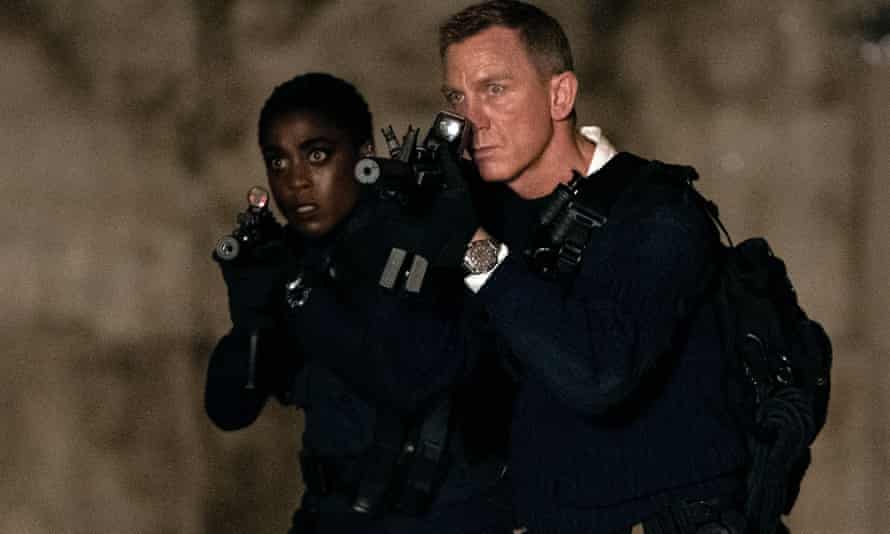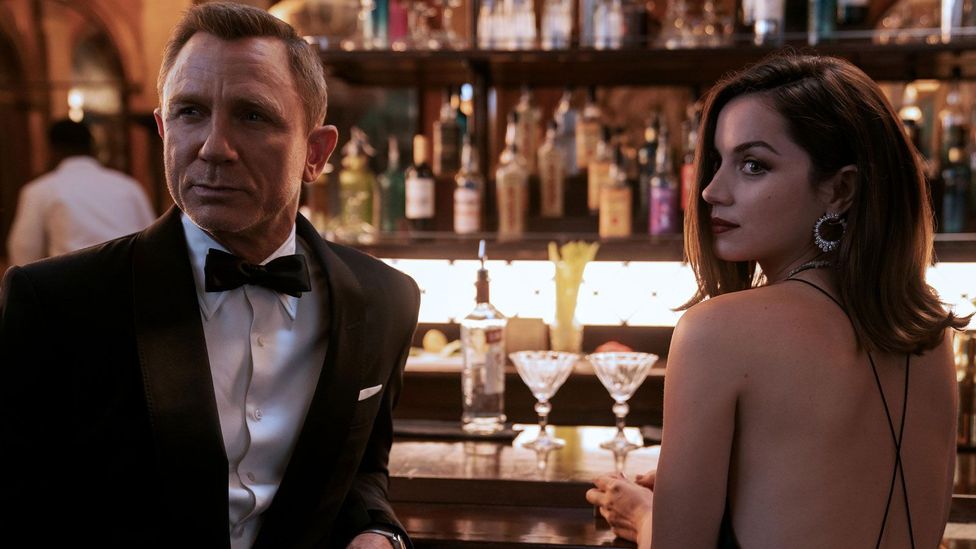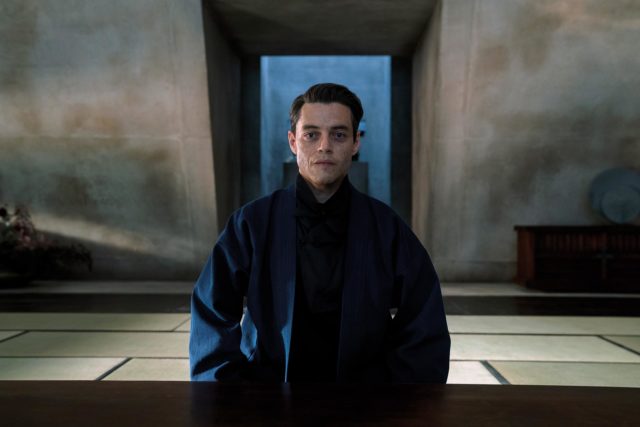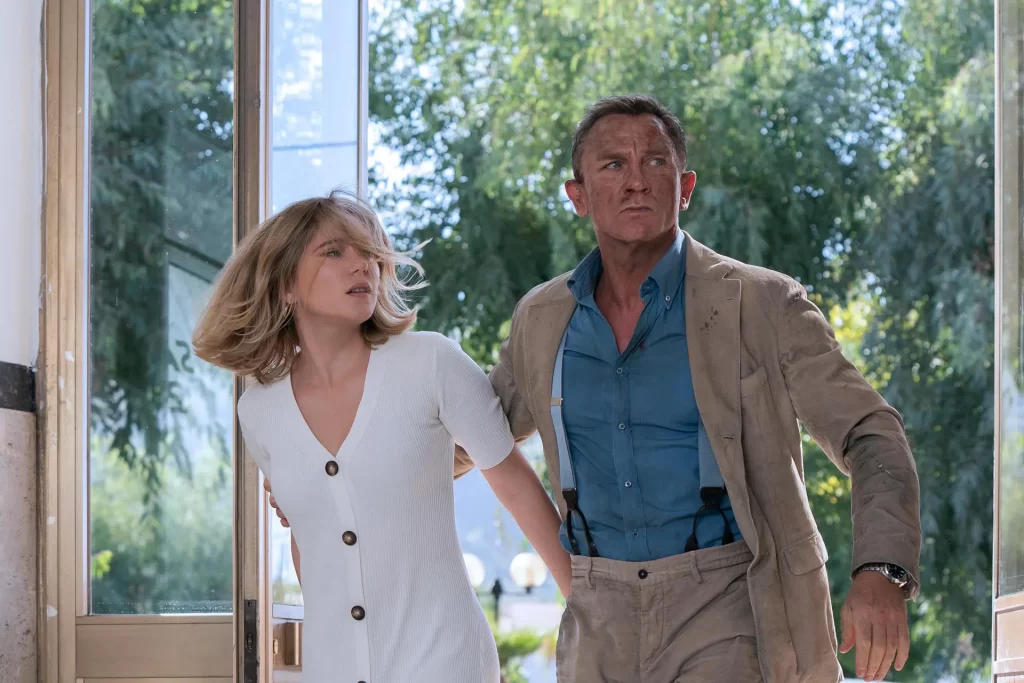“The proper function of man is to live, not to exist. I shall not waste my days in trying to prolong them. I shall use my time.” As M (Ralph Fiennes) reads this Jack London quote aloud near the end of “No Time to Die,” we realize how this latest installment in the James Bond film series takes the inevitability of time seriously.
And as Daniel Craig’s final outing in the titular role, we are witnesses to a 2-hour-43-minute tribute to arguably the best Bond in film history.
Nevertheless, there is an undercurrent of a pattern in Craig’s Bond outings. Safe to say, it’s interesting to note that his tenure as Bond has been a hit-or-miss; with the first (“Casino Royale”) and third (“Skyfall”) entries garnering critical acclaim. On the other hand, the second (“Quantum of Solace”) and fourth (“Spectre”) both reaped middling reviews. Hence, there’s considerable pressure on director Cary Joji Fukunaga (who co-wrote the script with Neal Purvis, Robert Wade, and Phoebe Waller-Bridge) to make “No Time to Die” deliver.
Not only should it be good to continue the trend; it should also serve as a fitting Craig’s swansong to the franchise.
And right off the bat: “No Time to Die” is hardly a perfect film; but it is a great Bond film—and one that closes Daniel Craig’s tenure as 007 in style.
Of Bioweapons—and the Itch to Save the World
The film picks up just right after the events of “Spectre,” which means Léa Seydoux’s Madeleine Swann returns. This is huge, because it’s unheard-of in the franchise to bring back a Bond girl from previous films—alive and still be playing a major role.
The movie’s 24-minute cold open gives the audiences a lot to unpack. We see a flashback of Madeleine’s childhood with her mom before a tragedy that followed; and Bond and Madeleine absconding to Southern Italy, only to be ambushed by Spectre assassins sent by Ernst Stavro Blofeld (Christoph Waltz). With his trust broken, Bond believes Madeleine tipped the organization of their whereabouts, and he breaks the whole thing off.
Five years later, we see an MI6 scientist kidnapped by an unknown group to modify a bioweapon designed to program with the DNA and target specific individuals with precision. Into the wrong hands, the bioweapon can now be used to kill people on a larger, dispassionate scale.
Naturally, trouble finds its way to Bond, even in his remotest places of self-imposed retirement. While being recruited by Felix Leiter (Jeffrey Wright) to help the CIA, M on the other hand sends Nomi (Lashana Lynch) a female double-0 agent who has made a name for herself while Bond is retired. Bond, visibly miffed at the new ‘00’ agent, doesn’t take too kindly to her dig that he’s not cut out for the world that has changed. And while Bond believes there’s nobody trustworthy in a world that needs saving, Nomi, conversely, thinks that the world needs someone who’s currently living in it. In a way, they’re both correct—they just don’t know who’s playing the parts this time.

The Trouble with Overcorrecting Missteps from Previous Films
What’s up in the air with “No Time to Die” is how it tries to fix the narrative mess left by “Spectre” and continue the story. While some viewers would appreciate such effort for the sake of continuity, audiences new to the franchise would feel like they have to re-watch the previous entry—and the others as well, for that matter.
This is evident in how the film integrated Blofeld and Leiter into the story. Personally, I think it’s a genius move to incorporate two of the integral characters in the James Bond mythos. Fukunaga and the crew are able to give both characters the closure they deserve, at least in the Craig incarnations.
In addition, the ramifications of the events from “Spectre” set off the actions MI6 took to ensure it doesn’t happen again. Naturally in these kinds of films, things go tits up, and before Bond knows it, he’s thrust back to the spotlight to try and save the day once again.
On Addressing the Longstanding Controversy with Sexism and Misogyny
Yes, Fukunaga’s direction plays a lead role in making sure “No Time to Die” would work; but the script should be top-notch as well. This is important, especially since the franchise has been dogged for decades with accusations of sexism and misogyny with how the films write their female characters. To address this, Craig himself worked with the producers to bring Phoebe Waller-Bridge (“Killing Eve,” “Fleabag”) on board to help with the screenplay.
And it turns out, it might have been what the series has been lacking all along: a voice from a female perspective. Imagine, it took 22 Bond films later before another female screenwriter is hired (Waller-Bridge is just the second female screenwriter credited with writing a Bond film, after Johanna Harwood co-wrote “Dr. No” and “From Russia with Love”).
This, to me, is the smartest choice the producers had done. Commissioning Waller-Bridge for the rewrites allowed for more character development and humor. More importantly, the film humanizes James Bond in a manner I’ve never seen since “Casino Royale.” “No Time to Die” examines Bond’s usual cynicism to reveal a façade of self-defense that masks a broken man with the inability to trust and fully invest emotionally after ‘the big one’ (a phrase that would make Blofeld giggle).
In line with the screenplay, “No Time to Die” also shows Bond in a light rarely seen in the franchise: he undergoes character development. By the time the third act unfolds, Bond doesn’t care about his double-0 status anymore. Initially having a contentious relationship with Nomi, he now acquiesces. He just wants to help Nomi whatever way he can to stop the villain from accomplishing his plans of annihilation.

When Women Write Women, There’s Just No Time to Die
Thankfully, “No Time to Die” manages to finally address the decades-long branding of the franchise as a misogynistic, sexist series that has taken ages to keep up with the times and the changing of the guard. This means that women in the film weren’t merely to exist; they were there because they are needed. For one, casting Lynch as a ‘00’ agent didn’t feel like a token move, or something along the lines of appeasing the “Me Too” movement. In contrast, Lynch and the filmmakers make sure she’s independent, with just as much recklessness and attitude as Bond himself.
Another surprise is the addition of Ana de Armas as Paloma, a neophyte albeit no-nonsense CIA agent. Despite having a short screentime, Armas imbues her character with a delicate mix of naivete and strength that could give rookie FBI agent Clarice Starling a run for her money.
Finally, we have Seydoux’s Madeleine Swann—always a fierce, passionate woman and never a damsel in distress. These characters add life to the whole movie; and as a result, we get properly written strong female characters who need no saving—and instead lend their hands to the protagonist who obviously needs a pair.
The Recent Tradition of Casting Oscar Winners as the Main Villains
Speaking of the villain, the film introduces us to Lyutsifer Safin (a disfigured Rami Malek), a vengeful soul out to wreak havoc to the world by unleashing a bioweapon comprised of biorobots that can kill people with utter efficiency. Malek’s casting follows a growing trend in recent James Bond entries of casting Academy Award winners in the villainous roles; from Javier Bardem’s Raoul Silva in “Skyfall” to Christoph Waltz’s Blofeld in “Spectre.”
Furthermore, Malek’s portrayal here follows the thread of the two mentioned villains. Here’s a tortured man determined to commit genocide for what he views as justified action. When Bond calls him just another person standing in a “long line of angry little men,” he simply replies, “I’m not angry—just passionate.” Like the stereotypical villains of the franchise, Safin is talky, with an accent that’s difficult to pin down and overpowering his monologues.
But while at times his performance is generic, Malek’s nuances in quieter scenes are scarily affective. For instance, when talking to a woman he once decided not to kill but who doesn’t recognize him, he eerily remarks:
“Saving someone’s life connects you to them forever…the same as taking it—”
“—they belong to you.”
How ‘No Time to Die’ Fares When Compared to Its Predecessors
Overall, I find “No Time to Die” a massive improvement over the disappointing “Spectre.” Nevertheless, it ultimately settles in the shadows of what I consider the greatest Bond films ever, “Skyfall.”
A few reasons include the feeling the movie gives off from the get-go, which is to live up to the stratospheric expectations set by the 2012 entry. That air of self-consciousness is apparent in the narrative of the film featuring Bond on the retreat, only to be coaxed out of retirement. This part feels like a retread of “Skyfall’s” first act.
Another reason involves Malek’s turn as the villain Safin. While paling in comparison to Javier Bardem and Christoph Waltz’s performances from previous installments, Malek does an admirable job while at times succeeding at being terrifying.
Finally, the movie’s theme song, sung by Billie Eilish which she co-wrote with her brother Finneas O’Connell, sounds like the melancholic twin sister of Adele’s theme song for “Skyfall” (Apropos: I won’t be talking about Sam Smith’s, since I still believe Radiohead’s rejected song for “Spectre” is the best Bond theme that never was).

No Time to Die for This Long-Running Franchise: The Search for the Next Bond
As Craig finally steps down from the role, people have begun throwing various names around as the new Bond. From continuing the trend in Tom Hardy to the first black Bond in Idris Elba, the options are endless. There are even calls for Lynch to assume the part as the next—and first woman—Bond.
Regardless of who takes up the mantle next, they’re going to fill in a very large pair of shoes.
The late great Sean Connery will always be the quintessential James Bond, especially for the olden days. But Daniel Craig is the perfect Bond for our times. Yes, there are fundamental flaws with the characterization; after all, it’s how Ian Fleming wrote the character in his books.
Having said that; Craig infuses his Bond with deeply layered emotionality sorely missing from other versions. When he cares, he deeply cares—often to a fault. His confrontation scene with Madeleine midway through the film shows us just how much feelings this man can have, and still decide to bottle them all in. So, it’s understandable when a man like that loses hope in forging human connection and instead masks his hurt with hedonism and cynicism.
So, yes; this is a human killing machine who loves his nihilism as much as he loves drinks and girls. Flawed? Yes. Terrible? Almost always.
Human? Absolutely.
So, for now, let’s just appreciate Daniel Craig’s interpretation of James Bond. Five films in fifteen years—that’s a hell of a way to go. And while it’s overall a bumpy ride; “No Time to Die” is definitely a great Bond film, and the perfect swansong for the Daniel Craig.


